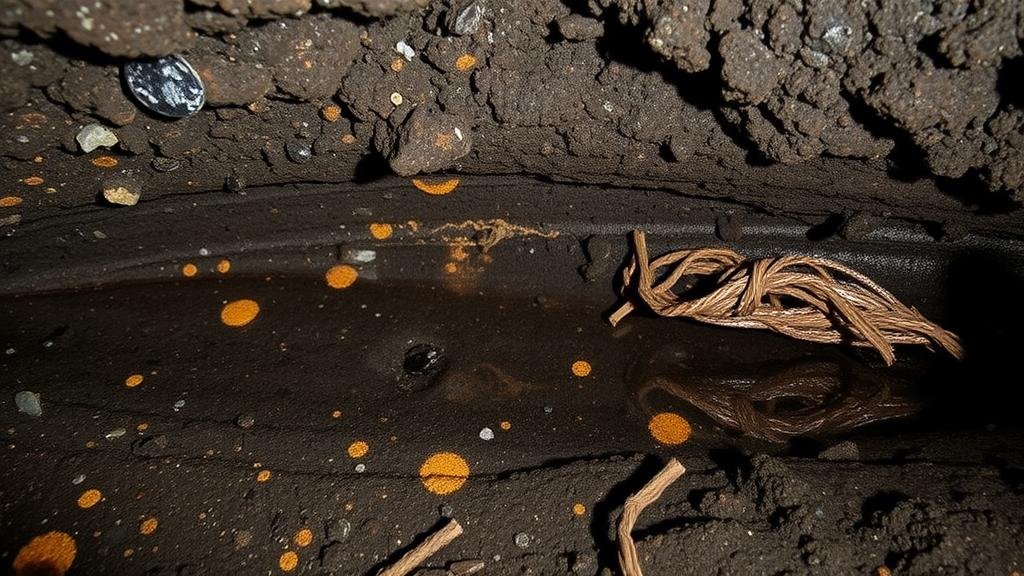Discovering ancient lava tubes in Hawaii filled with unique mineral deposits.
Discovering Ancient Lava Tubes in Hawaii: A Treasure Trove for Rockhounds and Mineral Collectors
Hawaii is not only known for its breathtaking landscapes and pristine beaches but also for its geological wonders, particularly its ancient lava tubes. These subterranean caves, formed by the flow of lava, provide a unique opportunity for rockhounds and mineral collectors to explore a world filled with remarkable mineral deposits. This article delves into the fascinating aspects of these lava tubes, the minerals found within them, and practical tips for collectors looking to uncover these hidden treasures.
Understanding Lava Tubes
Lava tubes are natural conduits through which lava travels from an active volcano, typically formed during the later stages of a volcanic eruption. As the outer surface of the lava flow cools and hardens, the molten rock inside continues to flow, eventually leaving behind a hollow tunnel. In Hawaii, these tubes can vary greatly in size, with some as small as a few feet in diameter and others stretching over 30 feet wide.
One of the most famous examples of a lava tube is the Thurston Lava Tube on the Big Island, measuring an impressive 600 feet long. This accessible tube showcases the formation and cooling patterns of lava, providing a perfect educational backdrop for both enthusiasts and researchers.
Mineral Deposits Within Lava Tubes
Hawaiian lava tubes are not only geological formations but are also a rich source of unique mineral deposits. Some key minerals and formations include:
- Hematite: This iron oxide mineral often appears as shiny black or metallic gray crystals, typically found in the walls of the tubes.
- Zeolites: These minerals form from volcanic rocks and can be identified by their zeolite family characteristics, such as their water retention capabilities and distinctive crystal forms.
- Calcite: Often seen as white or colorless crystals, calcite can fill fractures and cavities, resulting in stunning formations.
- Gypsum: This soft sulfate mineral can create intricate formations within the moist environments of some lava tubes.
Interestingly, the unique mineralization process in these tubes occurs due to varying temperatures and moisture levels, providing a distinct array of minerals that are not commonly found in typical rock formations.
Exploring and Collecting in Lava Tubes
Collectors aiming to discover and collect minerals from lava tubes should approach their exploration with preparation and caution. Here are some actionable tips to enhance your experience:
- Research: Study the geology of the specific area you plan to explore. The Big Island is known for its abundance of lava tubes, but specific tubes may have unique mineral deposits.
- Safety Precautions: Always wear appropriate safety gear, including helmets and knee pads. Be mindful of the temperature changes within the tubes and the potential for uneven terrain.
- Tools: Bring tools suitable for collecting, such as hand picks, brushes, and bags for your specimens. Remember to document your finds with photos and notes on their location.
- Environmental Responsibility: Collect responsibly and sustainably. Always check local regulations regarding mineral collection and respect the natural environment.
Real-World Applications and Conservation
The minerals found in volcanic environments like lava tubes have practical applications ranging from construction materials to advanced technologies. For example, zeolites are used in water purification and as catalysts in chemical processes. So, collecting these minerals not only serves personal interests but also supports scientific research and commercial industries.
Also, lava tubes serve as important ecological habitats. They host unique flora and fauna that contribute to the biodiversity of the region. Conservation efforts are critical to preserving these environments, emphasizing the need for collectors to approach exploration with a mindset focused on sustainability.
Conclusion: A Journey through Hawaii’s Geological Heritage
Exploring the ancient lava tubes of Hawaii offers an exciting adventure for rockhounds and mineral collectors. With their unique mineral deposits and stunning geological formations, these tubes provide a gateway to understanding the island’s volcanic history. By employing responsible collecting practices, enthusiasts can enjoy the thrill of discovery while contributing to the preservation of these natural wonders for future generations.
Embarking on this journey not only enriches personal collections but also helps foster a deeper appreciation for Hawaiis geological heritage, leaving each visitor with lasting memories of the natural beauty hidden beneath the surface.



